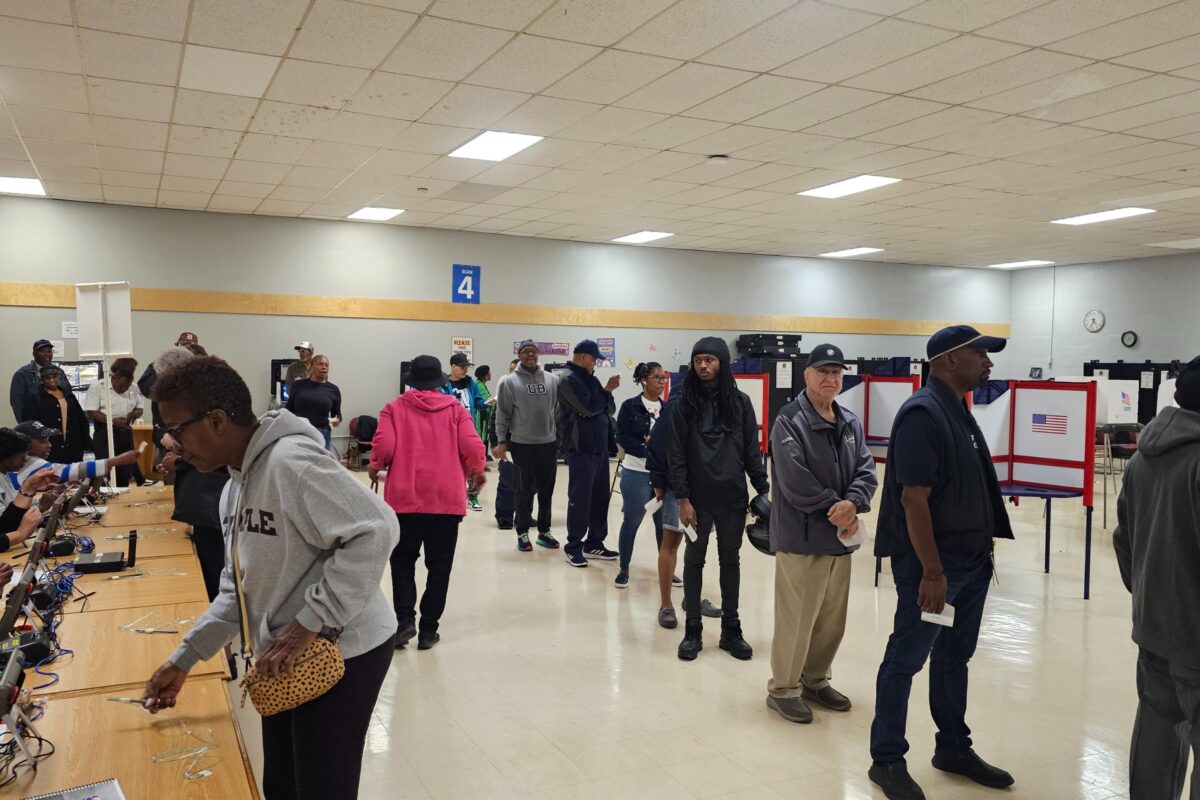Ahead of Election Day, Baltimore is sticking with the basics.
Registered voters in the city, like most across the country, will use paper ballots to cast votes on Nov. 5 or during the early voting period. Early voting has already begun and will run at eight sites until Halloween on Thursday.
There’s a lot of the ballot in Baltimore this year. Locally, voters will decide on major monetary issues like allocating $20 million toward the city’s Affordable Housing Trust Fund, and $50 million for different economic development incentives. Plus, Baltimore’s residents will decide if the city council will be reduced from 14 to eight districts, vote in Maryland’s highly contested Senate race and, of course, vote for the next US president.
Baltimore’s elections leader stressed how easy voting is and encouraged people to take part, whether by voting early, on Election Day or by mail.
“I just want to encourage people to exercise their right to vote,” said Armstead Jones, the election director at the Baltimore City Board of Elections. “There’s no reason why an individual can’t exercise their right to vote. There are plenty of ways that they can do it.”
Because of the low-tech equipment, hacking the machines isn’t as much of a concern, but physical tampering is, Jones told Technical.ly.
He explained how the process works across polling places in Baltimore: Voters will receive their ballot from an official, then go to a booth to mark it. Then, voters are escorted to a scanner by an election judge to drop off the ballot at the scanner of that polling place, then into a locked ballot box.
Maryland went back to paper ballots in 2016, largely replacing electronic voting in the state at the time. The state implemented electronic voting in 2002, but after encountering security concerns, the General Assembly voted in 2007 to go back to paper balloting. Budget issues meant it took several years to make that.
Ballot scanners are delivered to voting sites a day or two before Election Day, or before early voting started, per Jones. The night before that delivery, technicians will check to make sure the machines haven’t been tampered with. Then, on the morning of voting, those machines are checked again, as is the cabinet where blank ballots are kept.
If it’s found that machines or the cabinet filled with ballots have been tampered with, the police will get involved, Jones said.
That’s the same procedure if one of the 30-plus ballot drop boxes is discovered to be breached. Jones has seen voting by mail increase in recent years, but it’s not the majority of ballots.
Drop boxes are monitored via security cameras and intentionally kept in well-lit, populated areas. Workers will pick up ballots three times a day from the boxes, and police regularly drop by them to make sure everything is secure, per Jones.
On the hacking side, Jones said staffers are trained on how to avoid phishing scams or cyber attacks every month. The city also works closely with the state of Maryland in case bad actors are aiming at the state level.
“I know they [Maryland] have things in place to be on the lookout for those attacks that may come our way,” Jones said. “Of course, the staff here is very much aware.”
Before you go...
To keep our site paywall-free, we’re launching a campaign to raise $25,000 by the end of the year. We believe information about entrepreneurs and tech should be accessible to everyone and your support helps make that happen, because journalism costs money.
Can we count on you? Your contribution to the Technical.ly Journalism Fund is tax-deductible.
Join our growing Slack community
Join 5,000 tech professionals and entrepreneurs in our community Slack today!




